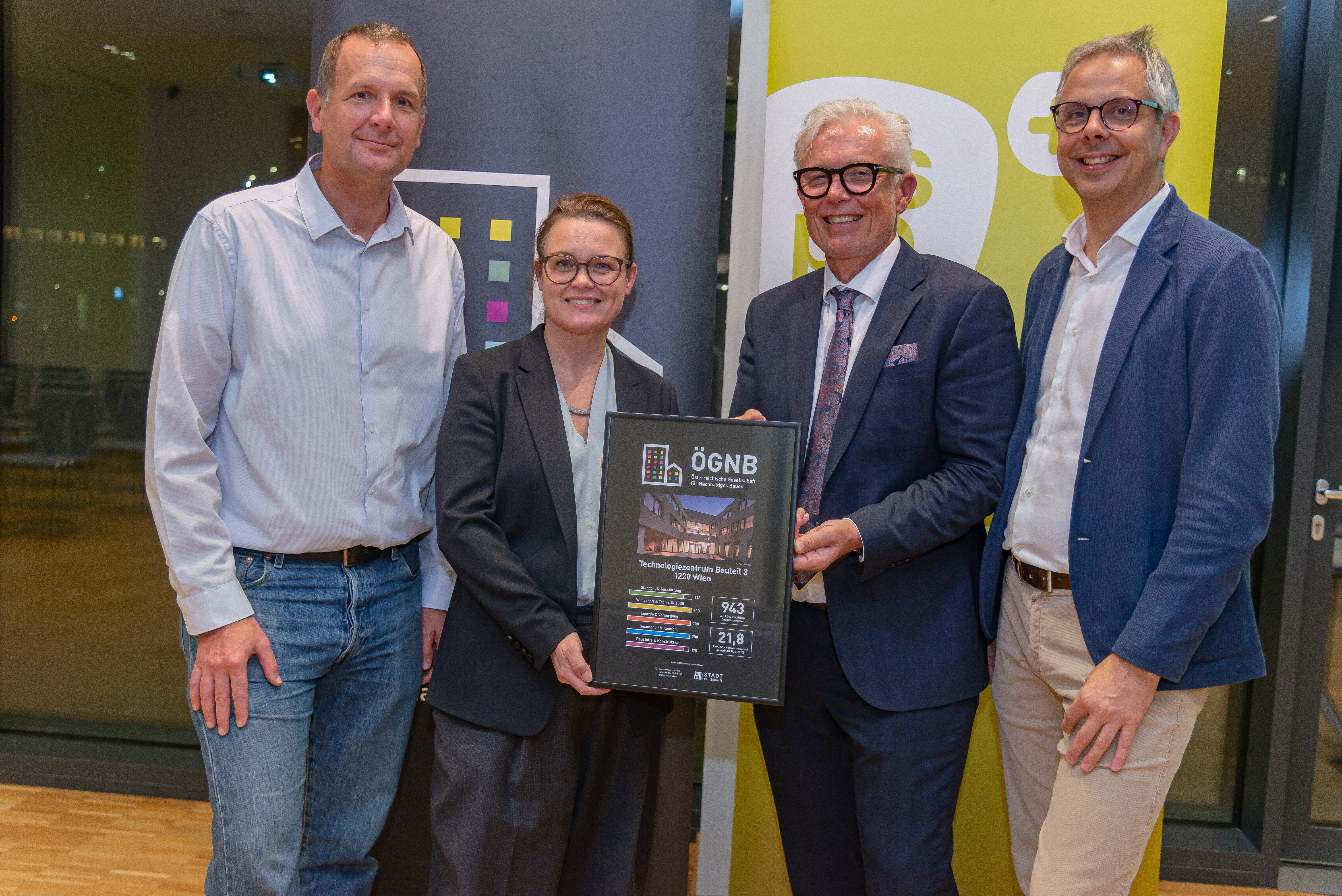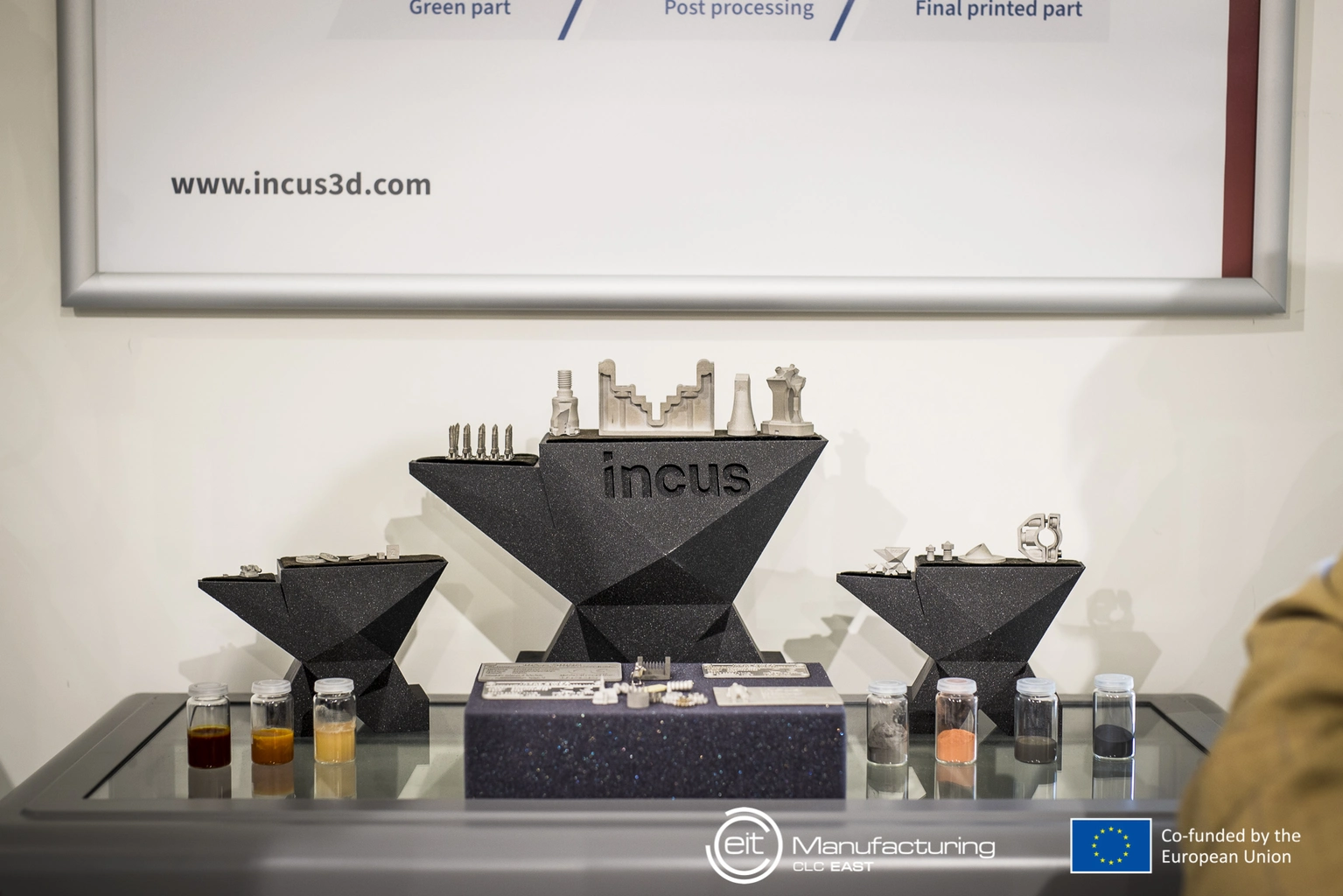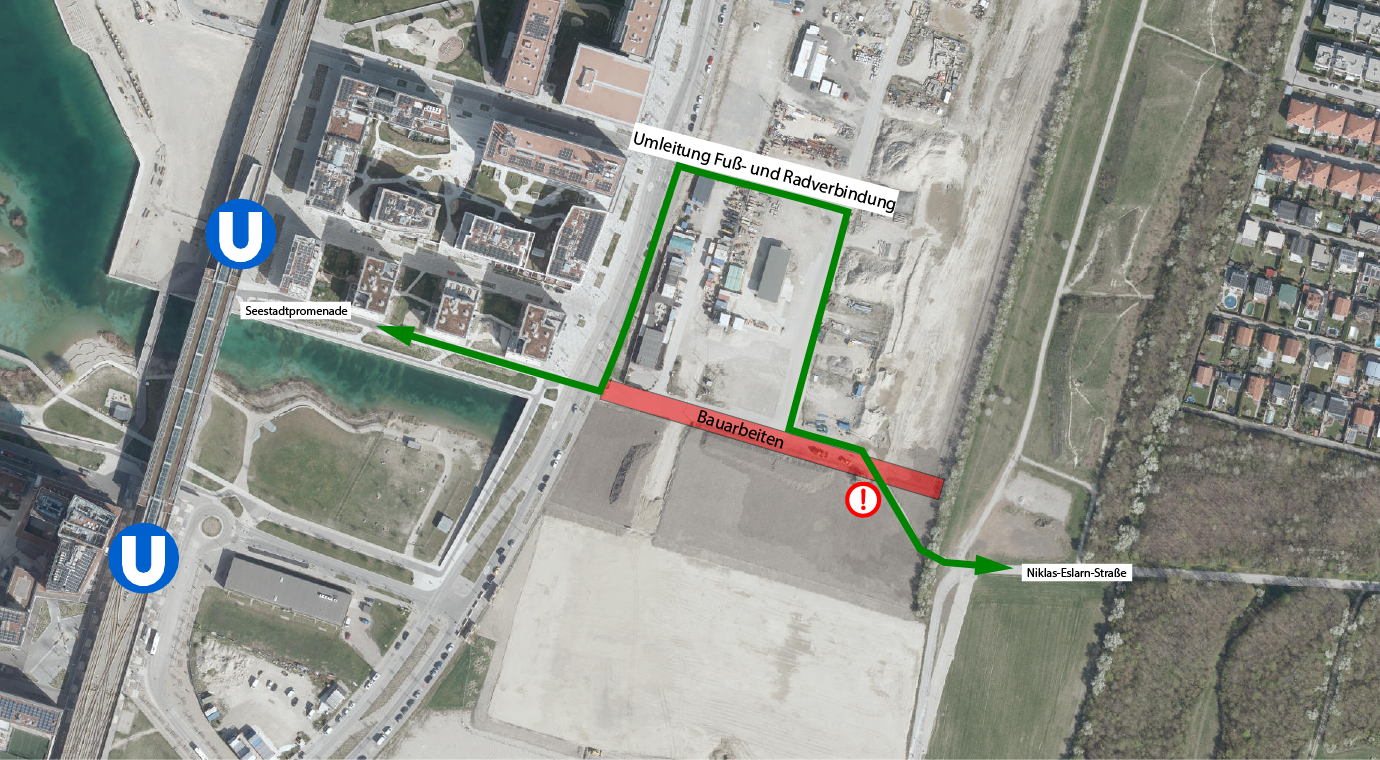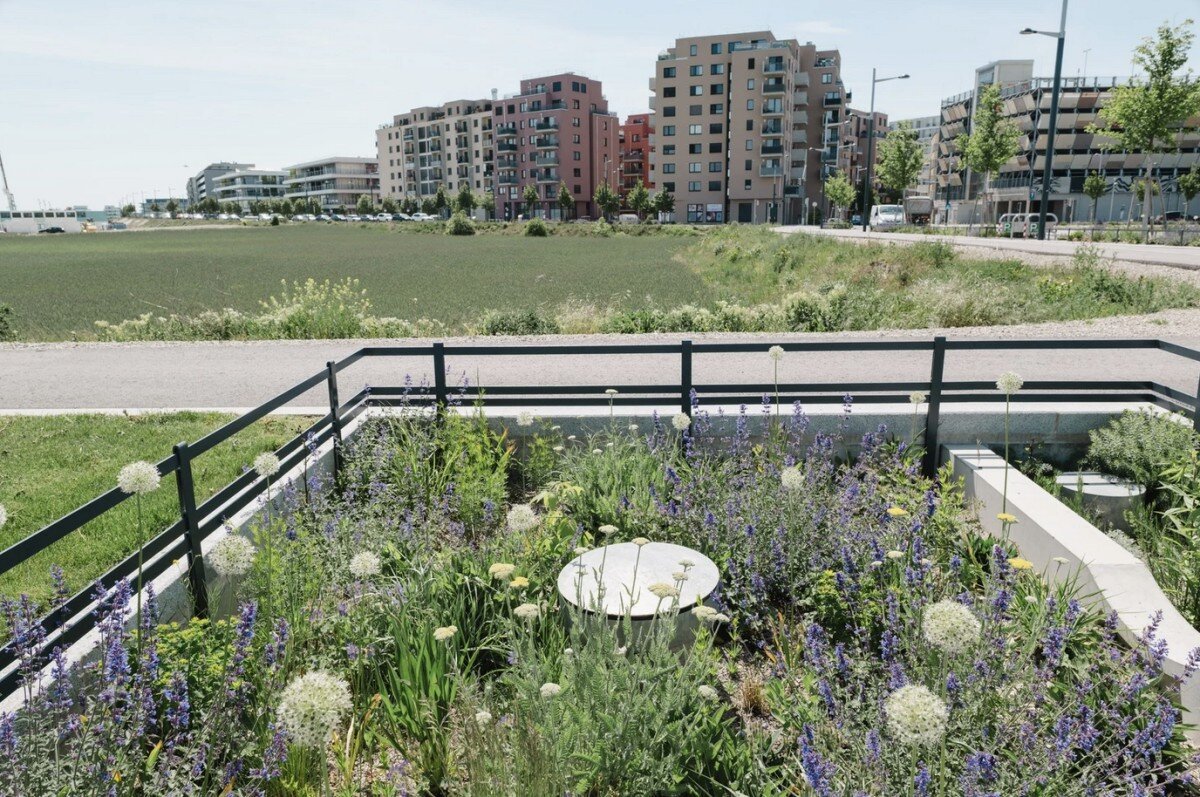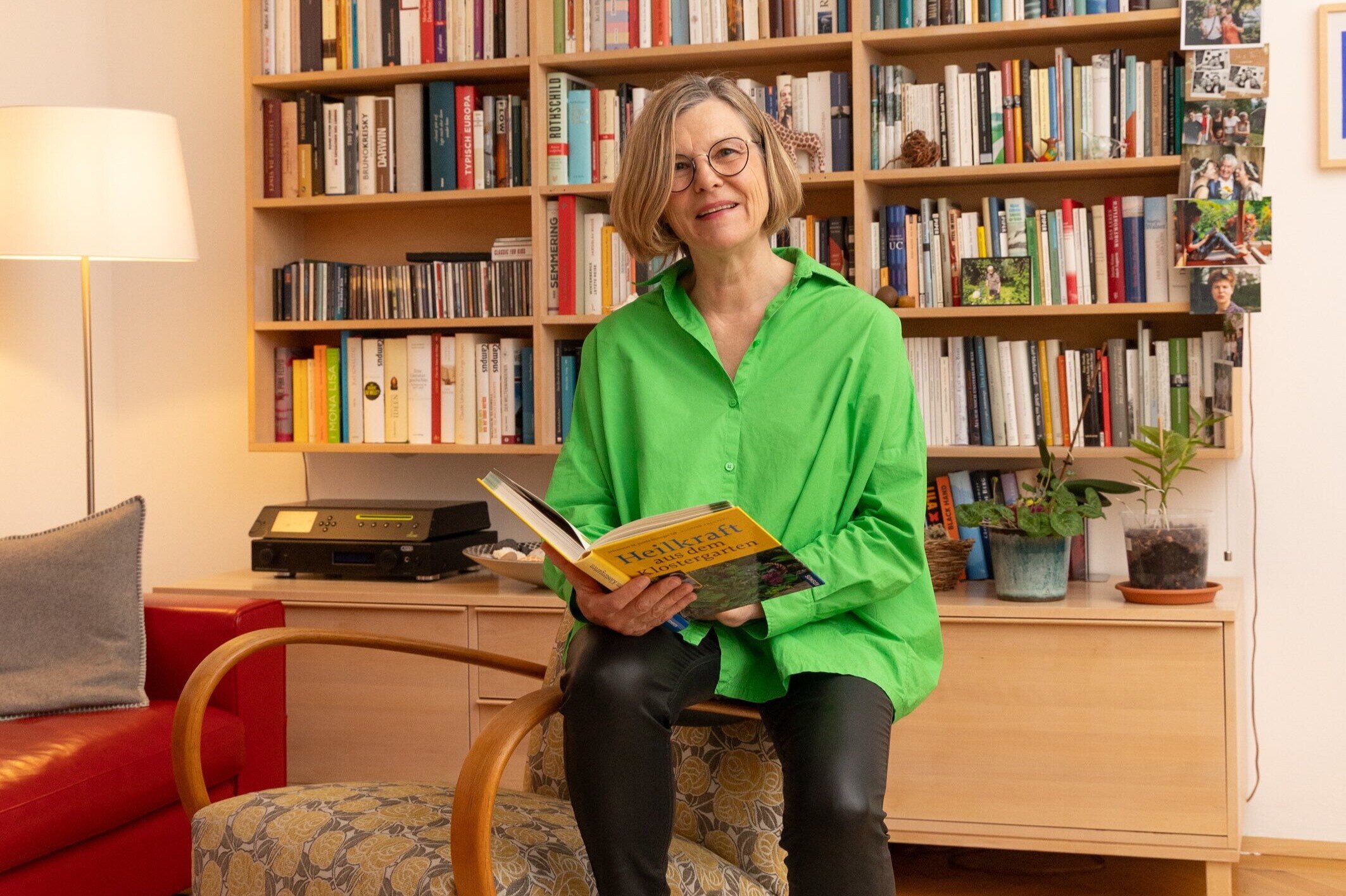Author
Ellen Berg
Published on 01.02.2022
From the business magazine "Workflow"
02/2022 Urban Creation
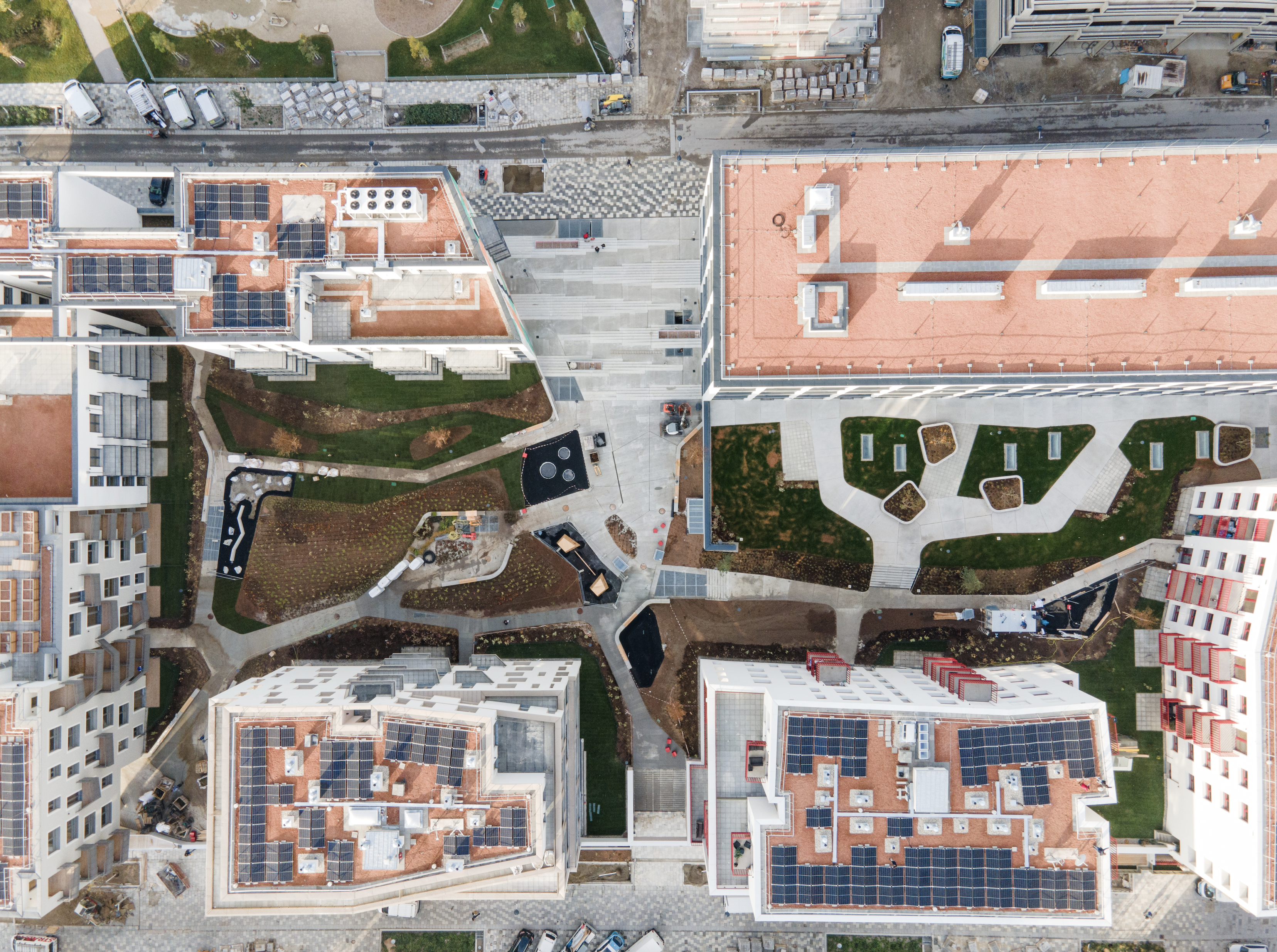
There are many answers to the question of why so much is possible in Seestadt that elsewhere is still dismissed as unfeasible, too expensive, or too risky. What is certain is that those responsible were aware from the very beginning of the opportunities a growing district offers for researching and implementing new technologies and standards that would never be possible in individual construction projects of this scale. And they were determined to consistently seize these opportunities under the motto 'Better is the enemy of good,' never settling for the status quo and always looking for what works, what can be improved, and where real milestones have been achieved that should be rolled out on a larger scale.
The course was set correctly in Seestadt as early as the first planning phase in 2008—when an energy crisis in Europe was unimaginable for most and ESG guidelines were nowhere in sight. A bold step was taken: the new district completely dispensed with gas boilers, which were then the standard.
"Even though energy and climate issues were still a minority concern back then, Seestadt already placed great importance on ensuring that the system would gradually operate without fossil fuels like gas or oil."
Gerhard Schuster
Vorstandsvorsitzender der Wien 3420
Instead, the focus was on district heating, which is being gradually decarbonized in Vienna, and the use of locally generated energy through photovoltaics, solar panels, heat pumps, or comprehensive component activation was promoted by strict benchmarks and competitions.
The most important lever: From the very beginning, the bar was set high for the buildings. "When we saw that all projects actually met the minimum standards, we raised them even further," says Schuster. The basis for this was the Total Quality Building Standard (TQB), an assessment standard of the Austrian Sustainable Building Council (ÖGNB), where a maximum of 1,000 points can be achieved in the categories of location and facilities, economic efficiency and technical quality, energy and supply, health and comfort, and resource efficiency. For all buildings in the first construction phase south of the lake, the requirement was at least 750 TQB points; in the new northern quarter, it was already 800. However, the first project, the Seestadt Technology Center of the Vienna Business Agency, thoroughly exceeded these requirements and achieved 975 points.
New Impulses
A good decade later, Seestadt is once again setting new impulses: In the 'Am Seebogen' quarter, a largely energy self-sufficient education campus for the City of Vienna has been completed. Recently, the 'Kraftwerk Seebogen' power plant went into operation on construction site H6, supplying nearly 20,000 square meters of new residential and commercial space. Through a combination of geothermal probes and a low-temperature energy network, a completely CO2-free energy supply is achieved here, which does not cost residents more than conventional systems.
Not to forget the ROBIN Seestadt project, which is attracting attention with its construction method. The complex of three office buildings—one of which has already been purchased by the private university Schloss Seeburg—will operate entirely without heating and cooling. How does that work? Thanks to extremely thick brick walls, intelligent shading and ventilation, and the heat produced by the users themselves.
Scientifically Accompanied
Development in Seestadt has been accompanied and researched scientifically from an early stage. In 2013, Siemens, Wien Energie, Wiener Netze, the Vienna Business Agency, and Wien 3420 founded “Aspern Smart City Research GmbH & Co KG.” Since then, Europe’s largest and most innovative energy research project has been working with real data from Seestadt to develop solutions for the urban energy future.
For example, in the area of “Smart Building,” where buildings can be identified as producers of renewable energy as well as for their potential for savings, while maintaining high living comfort and keeping construction and maintenance costs as low as possible over the entire lifecycle. Specifically, this is being implemented in five buildings: a residential building, a student dormitory, an education campus, a technology center, and another office building with sports facilities and parking garages. The buildings and equipment were deliberately selected by ASCR to observe a wide range of requirements and answer as many questions as possible.
The centerpiece is the intelligent Building Energy Management System (BEMS), which links the measured data and automatically responds to changes. Currently, it is “learning” to “communicate” with the sensors and actuators of other buildings. This not only enables the smart buildings to use energy intelligently, but also to produce it, store it for later if needed, or feed it into the grid.
Smart Charging
In the current research phase, this communication is also being used to find smart answers to questions about smart charging for electric cars. Power grids face major challenges due to the integration of e-mobility, as the grid must first cope with this additional, simultaneous energy demand. For this purpose, ASCR is researching intelligent charging and control infrastructure in the multifunctional garage 'Seehub,' which can manage charging processes while taking grid restrictions into account. At any time, it 'knows' how much electricity is being generated on the roof and consumed in the underground garage. Residents are also actively involved in the research again and again. 'For example, ASCR equipped 111 households in one of the first residential buildings with a smart home control app, allowing them to optimize their consumption and user behavior and remotely control the temperature at home,' reports Schuster. 'In return, ASCR received the data for its research.'
Climate-fit Objectives
In this specific case, however, it led researchers to learn that not all target groups constantly want to optimize their living environment. Insights from which consequences can be drawn – just like from other things that have proven to be optimizable. Because, as in any laboratory, there are not always only successes in the “Urban Lab” that Seestadt uniquely represents – some things turned out to be less suitable for everyday life than they seemed on the drawing board.
Nevertheless, in order to achieve the targeted climate neutrality, the objectives must be continuously adapted. For example, a multidisciplinary team of experts led by FH Technikum Wien, the Institute of Building Research & Innovation, and Urban Innovation Vienna has developed the new “aspern klimafit” standard, which is already being used in the two flagship projects at the “aspern urban Waterfront” and the high-rise on construction site J6 directly at the U2 station.
Architecture competitions are currently underway for all three projects – so there is much anticipation for the results. The aim of the six “klimafit” quality criteria – which range from efficient energy use and energy flexibility to renewable energy supply – is to reduce the CO2 footprint per resident by 4.6 tons per year with the targeted mix of measures in construction, housing and private use, as well as mobility. And with this standard, Seestadt once again lives up to its motto of “lifelong learning”: The expert team is already working on even stricter requirements to ensure that the “embodied energy” in the buildings is sustainably reduced.
A New Chapter in Geothermal Energy
With the latest chapter in energy supply, now being opened in Seestadt for all of Vienna, Bauernfeind’s Seebogen power plant is getting some competition – but in a positive sense, as Schuster emphasizes. “We see the innovation competition between individual project developers, who can also offer special solutions, and the big players like Wien Energie as a positive thing,” says the board of 3420 aspern Development AG. And the construction of the first deep geothermal plant for Vienna’s district heating is, of course, another flagship project of the “Urban Lab.”
In the Low-Temperature Network
On construction site H6, around 20,000 square meters of residential and commercial space are heated and cooled CO2-free. 'Heat and cold are produced using geothermal probes and an air heat exchanger,' explains David Bauernfeind, project manager at beyond carbon energy, the company that built the power plant. 'The electricity for heating and cooling is largely supplied by several photovoltaic systems, and the individual buildings are connected via a low-temperature energy network.' A system that, according to Bauernfeind, does exactly what his company stands for: 'Our basic premise is that CO2-free energy supply should not cost the developer more; but the burden should not be passed on to the users either.'
Vienna's First Geothermal Plant
In 2023, the project will start on a site at the edge of Seestadt. The deep geothermal plant is expected to generate up to 20 megawatts of climate-neutral district heating in the future, supplying 20,000 households. A good example of the perseverance sometimes required: Just a few weeks ago, Wien Energie gave the green light for the construction of Vienna's first geothermal plant by 2026, a milestone on the path to a climate-neutral metropolis. The first exploratory drilling for geothermal energy near Seestadt actually took place ten years ago—and served as the basis for today's project. To make the plant even more efficient, Wien Energie also plans to operate it in combination with a heat pump. The total investment amounts to 80 million euros, with eight million contributed by the Ministry of Climate Protection. The plant is a pilot project for the rapid further expansion of deep geothermal energy in Vienna. By 2030, Wien Energie aims to develop four plants in Donaustadt and Simmering with a total capacity of up to 120 megawatts. The expansion of deep geothermal energy is also to continue after 2030, so that district heating will be generated entirely from climate-neutral sources by 2040. Drilling at the 'Aderklaaer Conglomerate' is scheduled to begin in 2024, with commissioning planned for 2026. Once again, a new chapter for the entire city is starting in Aspern: 'We are giving the green light for the heat transition! The goal is: out of gas—and the development of deep geothermal energy is an important step in this direction,' says Michael Strebl, CEO of Wien Energie. Seestadt qualified as the site for the pilot plant partly for geological reasons, due to the large thermal water reserves several kilometers underground. But also because of the pioneering work in alternative energy production that has been done here since its founding, as Peter Keglovic, project manager for geothermal energy at Wien Energie, explains: 'In addition to the underground source, the offtake is also an important issue. And the existing district heating network in Seestadt enables short distances for this offtake.'

